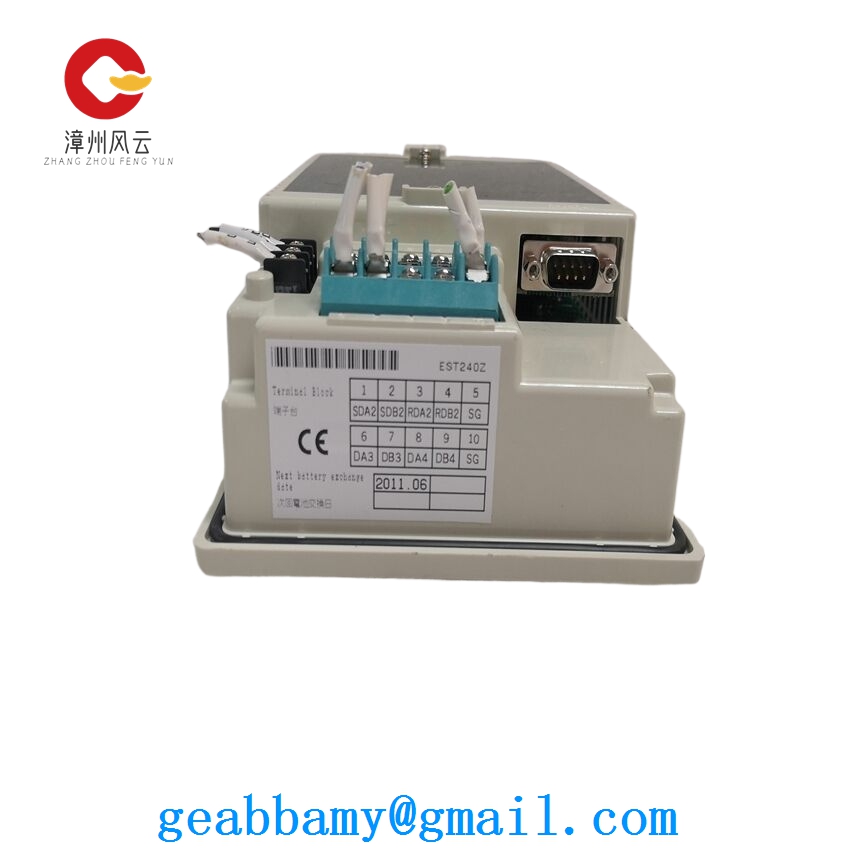Technical Parameters of ABB REF542PLUS Base Unit 752001/3WA6I

1. General Description
The ABB REF542PLUS base unit 752001/3WA6I is a sophisticated protection and control device designed for power system applications. It plays a crucial role in ensuring the reliable and safe operation of electrical networks by providing comprehensive protection, monitoring, and control functions for various power system components such as transformers, generators, and feeders.
2. Protection Functions
- Transformer Protection:
- Differential Protection: Offers high – sensitivity differential protection for transformers, detecting internal faults quickly and accurately. It can distinguish between in – zone and out – of – zone faults, minimizing unnecessary trips and ensuring the continuity of power supply.
- Overcurrent Protection: Provides multiple stages of overcurrent protection, including instantaneous, short – time, and long – time overcurrent elements. These elements can be configured according to the transformer’s characteristics and the system’s requirements to protect against overloads and short – circuits.
- Thermal Protection: Simulates the thermal behavior of the transformer winding, taking into account factors such as load current, ambient temperature, and cooling conditions. It issues alarms or trips the transformer when the winding temperature exceeds safe limits, preventing thermal damage.
- Generator Protection:
- Stator Earth Fault Protection: Detects earth faults in the generator stator windings, which can lead to severe damage if not cleared promptly. The device offers different methods of stator earth fault protection, such as third – harmonic voltage – based and zero – sequence voltage – based schemes.
- Negative – Sequence Protection: Protects the generator against negative – sequence currents, which can cause excessive heating in the rotor. It monitors the negative – sequence current and trips the generator when it exceeds the set threshold.
- Feeder Protection:
- Distance Protection: Measures the impedance between the protection device and the fault location along the feeder. It provides accurate and fast fault detection and isolation, with multiple zones of protection to cover different sections of the feeder.
- Overcurrent and Earth Fault Protection: Similar to the protection for transformers, it offers overcurrent and earth fault protection for feeders, with configurable settings to suit the feeder’s characteristics.
3. Monitoring Functions
- Electrical Parameters Monitoring: Continuously measures and displays a wide range of electrical parameters, including voltage, current, power, frequency, and power factor. These parameters can be monitored in real – time, and historical data can be stored for analysis and troubleshooting.
- Transformer Condition Monitoring: In addition to thermal protection, it can monitor other aspects of the transformer’s condition, such as oil temperature, gas levels (in oil – filled transformers), and partial discharge activity. This helps in early detection of potential problems and preventive maintenance planning.
- Generator Performance Monitoring: Monitors the generator’s performance parameters, such as active and reactive power output, excitation current, and rotor speed. It provides alerts when the generator’s performance deviates from the normal range, ensuring efficient and reliable operation.
4. Control Functions
- Circuit Breaker Control: The base unit can control the operation of circuit breakers associated with the protected equipment. It issues open and close commands based on protection trips, manual operations, or automatic control strategies.
- Auto – Reclosing: Supports auto – reclosing functionality for feeders. After a fault is cleared, it can automatically reclose the circuit breaker to restore power supply, improving the system’s reliability. The reclosing sequence and timing can be configured according to the system’s requirements.
- Remote Control and Monitoring: Provides communication interfaces for remote control and monitoring. It can be integrated into a supervisory control and data acquisition (SCADA) system, allowing operators to monitor the status of the protected equipment, issue control commands, and access historical data from a central location.
5. Communication Interfaces
- Ethernet: Equipped with Ethernet ports for high – speed communication with other devices on the network. It supports standard communication protocols such as IEC 61850, Modbus TCP, and DNP3, enabling seamless integration with SCADA systems, intelligent electronic devices (IEDs), and other automation equipment.
- Serial Communication: Also offers serial communication ports (such as RS – 232 or RS – 485) for connecting to legacy devices or for local communication with other equipment in the substation.
6. Human – Machine Interface (HMI)
- Front – Panel Display: Features a user – friendly front – panel display that shows real – time information about the protected equipment, including measured parameters, protection status, and alarm messages. The display is easy to navigate, and operators can perform basic operations such as viewing data, acknowledging alarms, and changing settings (with appropriate authorization).
- Remote HMI Access: In addition to the local front – panel display, the device can be accessed remotely through a web – based interface or a dedicated HMI software. This allows operators to monitor and control the device from any location with network connectivity.
7. Environmental Specifications
- Operating Temperature: Can operate within a specified temperature range, typically from – 25°C to + 70°C (the exact range may vary depending on the specific product configuration). This ensures reliable operation in various environmental conditions, including outdoor substations with extreme temperatures.
- Humidity: Designed to withstand a certain level of humidity, with a relative humidity range of up to 95% (non – condensing). This makes it suitable for installation in humid environments.
- Vibration and Shock: Built to meet industrial vibration and shock standards, ensuring its mechanical integrity and reliable performance in environments with mechanical stresses, such as near heavy machinery or in areas prone to seismic activity.
8. Power Supply
- Input Voltage Range: Accepts a wide range of input voltages, typically from 85V to 264V AC or 110V to 300V DC (the exact range may vary). This provides flexibility in power supply selection and ensures reliable operation even in environments with voltage fluctuations.
- Power Consumption: Has low power consumption, which helps to reduce operating costs and environmental impact.
In conclusion, the ABB REF542PLUS base unit 752001/3WA6I is a highly advanced and versatile protection and control device that offers a comprehensive set of functions for power system applications. Its advanced protection algorithms, extensive monitoring capabilities, flexible control features, and reliable communication interfaces make it an ideal choice for ensuring the safe and efficient operation of electrical networks.


